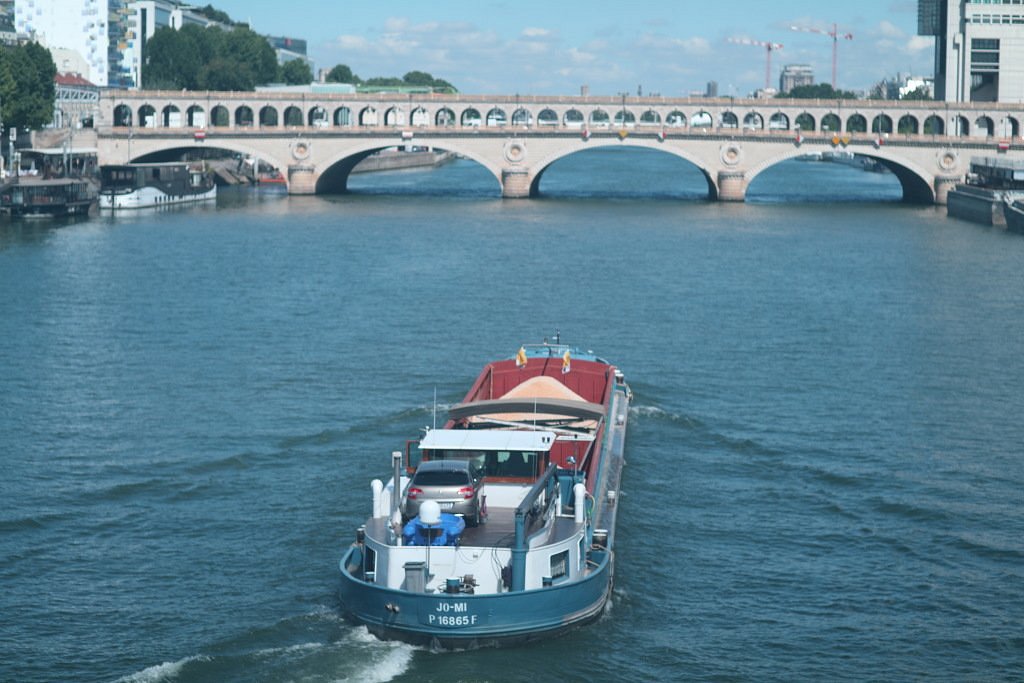Description
The Pont de Bercy is a delightful Parisian attraction transports you to a world of wonder and awe. This stunning bridge spans the Seine River, offering breathtaking views of the city’s iconic landmarks. Take a stroll along the bridge and soak in the beauty of Paris as the sun sets over the horizon.
The Pont de Bercy is a must-see destination for travelers who want to experience the city’s charm and romance. With its picturesque scenery and rich history, this attraction is perfect for anyone looking to explore the beauty of Paris.
Photo Gallery
[su_content_slider style="dark" autoplay="0"] [su_content_slide] [/su_content_slide]
[su_content_slide]
[/su_content_slide]
[su_content_slide] [/su_content_slide]
[su_content_slide]
[/su_content_slide]
[su_content_slide] [/su_content_slide]
[/su_content_slider]
[/su_content_slide]
[/su_content_slider]
Top-Rated Tours in Paris
Table of Contents
The Pont de Bercy is a historic bridge that spans the Seine River in Paris, France. Built in the mid-19th century, this bridge has played a significant role in connecting the 12th and 13th arrondissements of the city. With its elegant design and rich history, the Pont de Bercy is a testament to the architectural and engineering prowess of its time.
History and Construction
The Pont de Bercy was constructed between 1863 and 1864 under the direction of engineer Feline-Romany. The bridge was initially designed as a simple structure for vehicle traffic, replacing an earlier wooden bridge that had stood in its place. The original Pont de Bercy was a stone arch bridge featuring three arches that gracefully spanned the Seine.
Over the years, the bridge underwent several modifications and renovations to accommodate the city’s changing needs. In the early 20th century, the Pont de Bercy was widened to allow for increased traffic flow and the addition of pedestrian walkways on either side.
Location and Surroundings
The Pont de Bercy is situated in the eastern part of Paris, connecting the Boulevard de Bercy in the 12th arrondissement with the Quai de Bercy in the 13th. The bridge is located near the Bercy neighborhood, once a thriving center of the Parisian wine trade. Today, the area around the Pont de Bercy is known for its modern developments, including the Bercy Village shopping center and the Bercy Arena, a popular venue for sports events and concerts.
The bridge offers stunning views of the Seine River and the surrounding cityscape. From the Pont de Bercy, visitors can admire the nearby Ministry of Finance building, an impressive example of modern architecture, as well as the Bibliothèque Nationale de France (National Library of France) on the river’s opposite bank.
Architectural Style and Design
The Pont de Bercy showcases the architectural style of the mid-19th century with its stone construction and elegant arches. The bridge’s design is a testament to the skill and craftsmanship of the engineers and builders of the time, who created a structure that has endured for over 150 years.
The bridge’s three arches, each spanning approximately 40 meters, are supported by sturdy stone piers that rise from the riverbed. The bridge deck is lined with ornamental lampposts and features pedestrian walkways on either side, providing a pleasant space for visitors to stroll and take in the views of the Seine and the surrounding city.
Significance and Legacy
The Pont de Bercy is an important link between the 12th and 13th arrondissements of Paris, facilitating the flow of traffic and pedestrians across the Seine. The bridge has witnessed the city’s growth and evolution over the past century and a half, standing as a symbol of Paris’s enduring spirit and resilience.
In addition to its practical significance, the Pont de Bercy has also been featured in various works of art, including paintings and photographs that capture the essence of Parisian life. The bridge’s timeless beauty and historic charm inspire artists and visitors alike, making it a beloved landmark in the city’s heart.
The Pont de Bercy is a remarkable example of 19th-century engineering and a treasured part of Paris’s architectural heritage. With its stunning design, rich history, and prime location, the bridge continues to captivate visitors and locals as it gracefully spans the Seine River. As an enduring symbol of the city’s past and present, the Pont de Bercy remains an integral part of the Parisian landscape, connecting two arrondissements and the hearts of those who enjoy crossing its path.